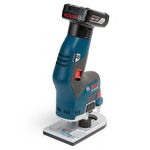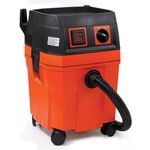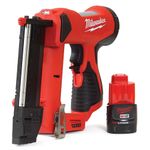
Synopsis: Woodworker and hand surgeon Dr. E. Jeff Justis talks about three main causes for injuries in the woodshop: inattention through repetition, an unanticipated happening, and inexperience or overconfidence. He offers tips on how to avoid these injuries, such as by using push sticks and other safety devices, not working when tired, and by pausing after every couple of repeat operations to refocus and regain full awareness. Many of the victims he’s met had 20 or more years of experience as woodworkers when they were hurt and have lessons to share on avoiding their situations. A separate article discusses bad judgment brought on by fatigue as another major cause of injury.
Wood-workers relish the feel of a tenon sliding into its mortise, and the smooth texture of a newly finished piece of furniture. Our fingertips are so sensitive that we can feel blemishes and flaws in our woodwork that are too slight to be perceived by the eye. Where would we be without these sophisticated sensors? Human evolution is, in part, the result of our early manipulation of our environment with our hands, and this is perhaps at the root of the creative impulses that make woodworking so satisfying.
It’s no wonder, then, that people who have severely injured a hand or lost a limb often have emotional difficulty adjusting to their impairment. In fact, sometimes psychiatric care must supplement physical therapy. As a woodworker and a hand surgeon who has seen too many injuries, I am vividly aware of the risk in using power tools. I’ve also come to realize that virtually all injuries are preventable.
I have treated many patients with hand injuries inflicted by woodworking tools. Surprisingly, about one-third of all accident victims seen in hospital emergency rooms have an injury to the arm or hand. A 1964 study in England found that woodworking tools are responsible for most industrial injuries. Even so, research has not been done on the question of which tools are the most dangerous; hospitals don’t generally obtain such information, and medical personnel don’t always know the differences among various tools. A medical report may attribute an injury to a handsaw when in fact the injured patient was using a portable circular saw. I’ve never been injured by my tablesaw or my portable circular saw, but my own experience as a surgeon dearly suggests that circular saws account for the majority of serious hand injuries among woodworkers. I routinely discuss the mechanism of injury with patients, and I have concluded that there are three major causes of serious injuries from a power tool: inattention through repetition, an unanticipated happening, and inexperience or overconfidence. Many accidents involve some combination of the three, not to mention bad judgment brought on by fatigue.
Inattention through repetition—A woodworker performing a number of repetitive cuts, such as a series of crosscuts to length, may become dangerously inattentive. The whine of the machine and the repetitious physical movement can lull the worker in an almost hypnotic way.
From Fine Woodworking #36
For the full article, download the PDF below:
Fine Woodworking Recommended Products

Bosch 12V Trim Router

Fein Turbo II HEPA Wet/Dry Dust Extractor

Milwaukee M12 23-Gauge Cordless Pin Nailer




















Log in or create an account to post a comment.
Sign up Log in